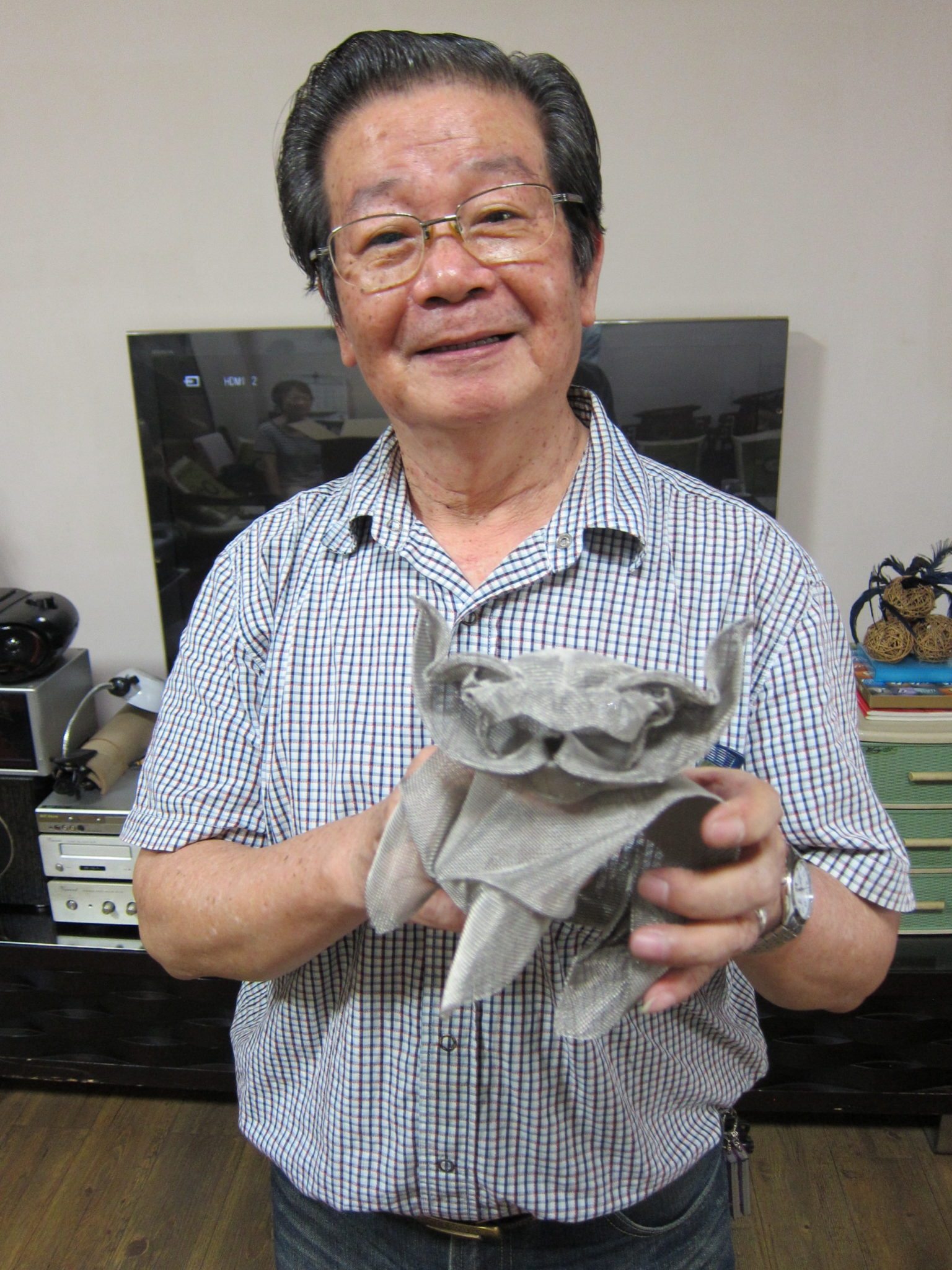During January 2013 Saadya Sternberg wrote me saying:
“I came across this Master Folder, who equals or surpasses almost anyone I’ve seen working today in his directions, who is Taiwanese. Am embarrassed actually not to have known of him sooner. He is Lai Chen- Hsiang, of Taichung City, Taiwan. He deserves a pilgramage”
See [the following for pictures of his work]
http://www.facebook.com/pages/%E8%B3%B4%E7%A6%8E%E7%A5%A5%E7%9A%84%E6%91%BA%E7%B4%99%E4%B8%96%E7%95%8CThe-Origami-World-Of-Lai-Chen-Hsiang/306076656136547
and [for a description of how he became a sensational artist]
On August 28th my friend Dr. Hon-Tsen Yu (Alex) and I took Saadya’s advice. We left Taipei that morning for Taichung City on an express train as a typhoon approached the western side of Taiwan. Alex had previously talked by phone with Master Lai’s wife who was not keen on our visit at the time. When Alex sent her a book of my diagrams (Eco-Origami), she knew we were serious and would appreciate her husband’s art. Few times have I visited with an artist so competent and humble.
We got on a local train at the main station in Taichung, and then took a taxi to the Ching Kuang Paint Shop, a business Master Lai took over from his father. He ushered us in to a dimly lit room with a couch on one end facing a large flat-screen television. Mrs. Lai brought in fruit and tea while Chen-Hsiang flicked through as many as 500 photos of his art. There was art of every genre; paintings; sculpture in wood, cardboard, and wire; cut-out paper designs, and of course, origami.
“The Japanese don’t consider this origami because I often use more than one piece of paper,” he confessed. I said that was irrelevant, particularly so when making art. Parents in Taiwan discourage their children from wasting time doing arts and crafts, including origami. Chen-Hsiang was only allowed to do origami after he had finished his work in his father’s paint shop. He became a self-taught master of the technique by sleeping only a few hours before midnight and then folding until dawn. He delighted in showing Alex and me his kinetic experiments in folding wire. This was someone who had escaped the servitude of most of his peers to play, have fun, and explore what could be done with the most basic materials.
In the mid 1980s the government of Taiwan featured his work in exhibits around the world. It is tragic he has not been able to exhibit his work since then. Perhaps that is something our effort can help to change? And by doing it, affect attitudes in Taiwan about the value of play and experimenting.
